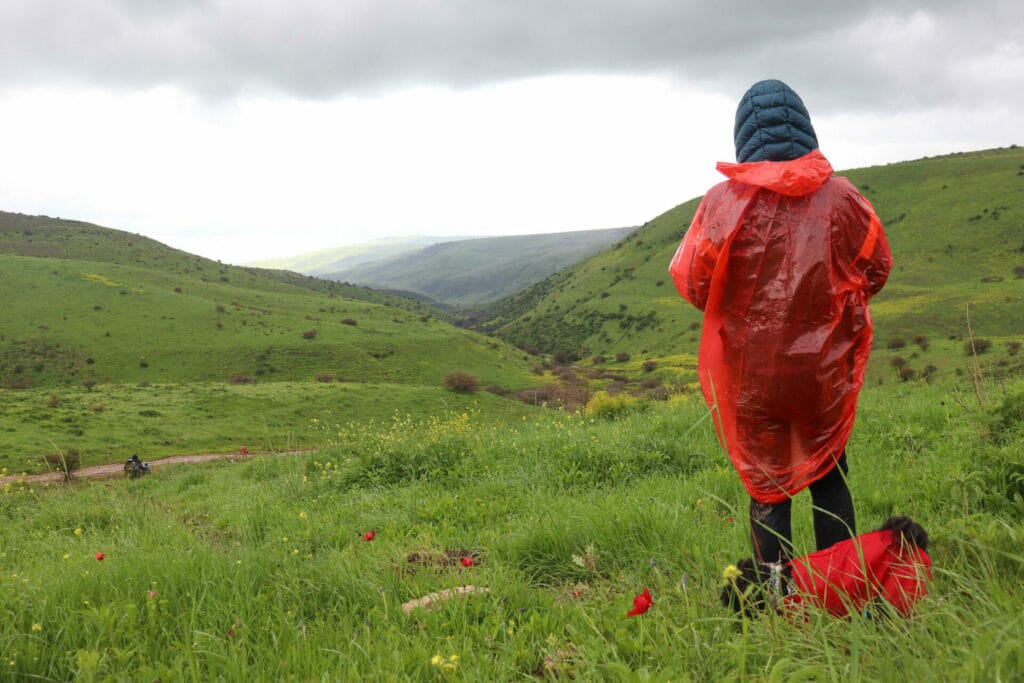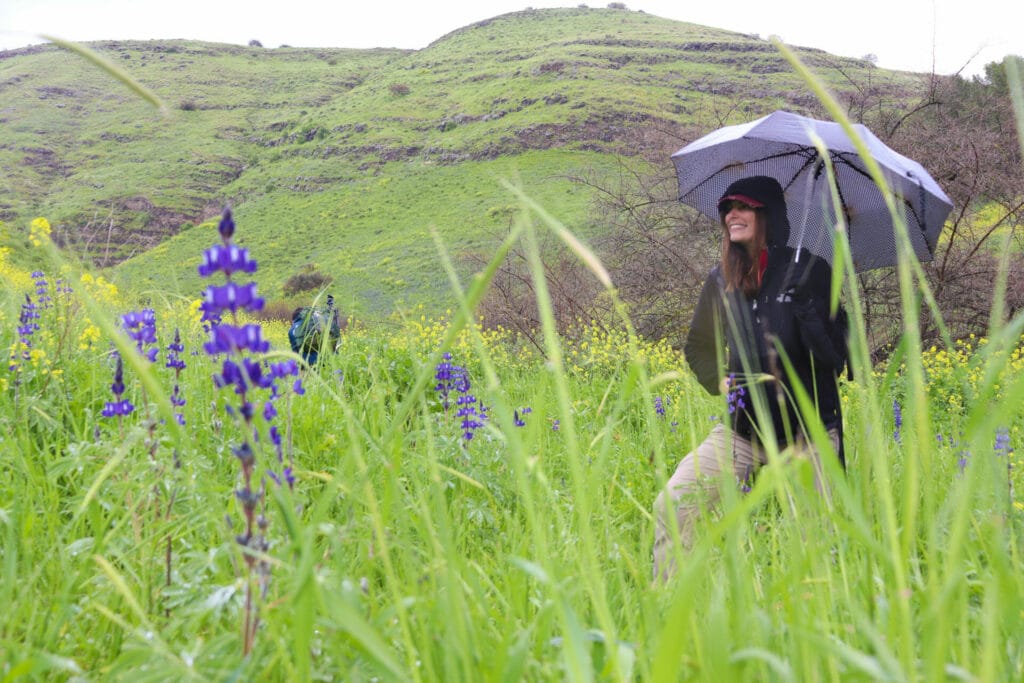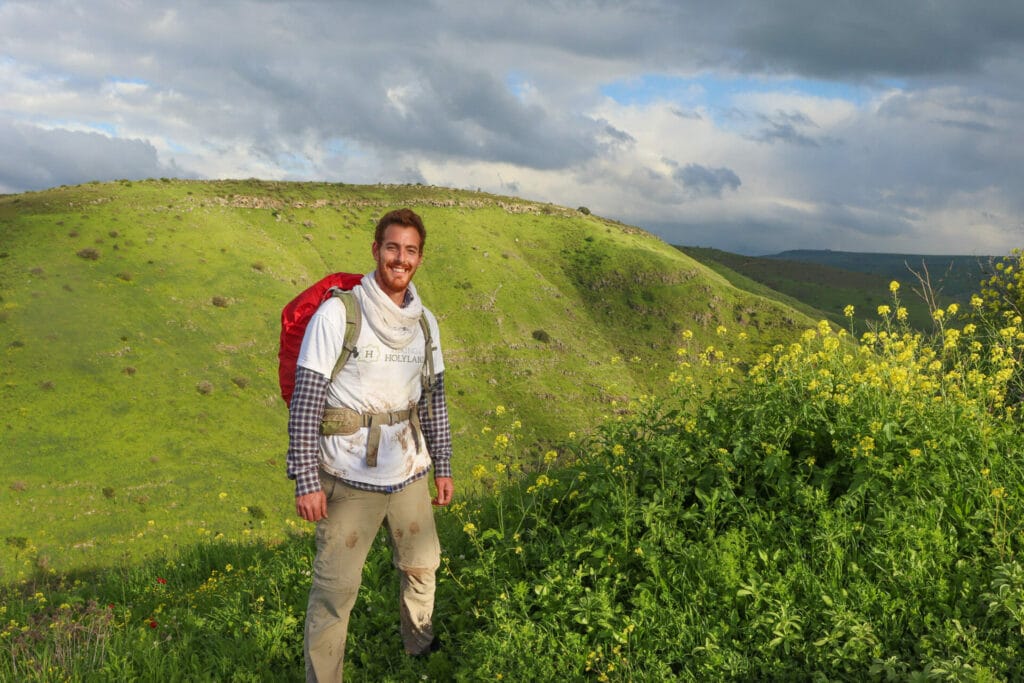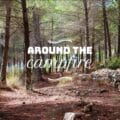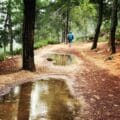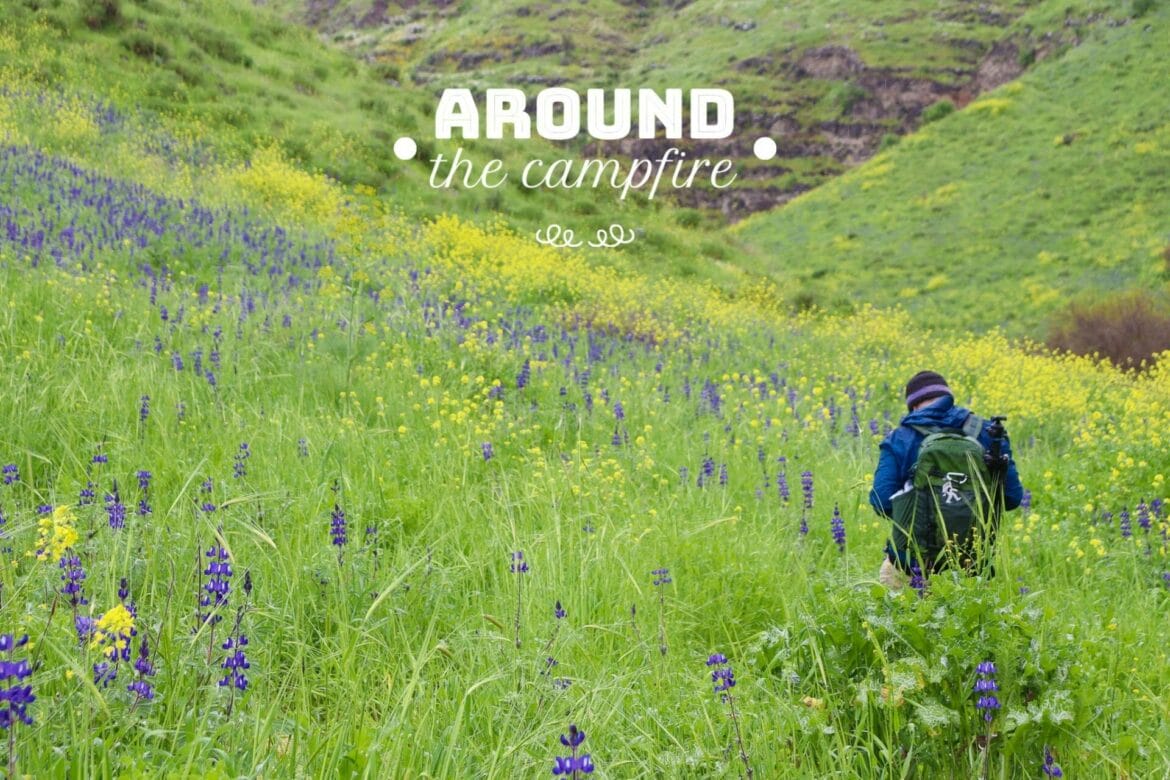
“Go out and see which is the good path that men should cling to.
Rabbi Eliezer said: A good eye.” – Chapters of the Fathers.*
It was 10:30 AM on a March morning, and we had just driven through traffic for 3 hours. The sky, once blue and cloud filled, was now most definitively threatening rain. Just as the minibus pulled into the parking lot with a group of 15 hikers for our group hike, the clouds burst. It started pouring rain.
Here we all were, at one of the most stunningly beautiful places in Israel at the most perfect time of year. And the weather was absolutely terrible. We huddled together under a fortunate awning and deliberated about our course for the day.
Ultimately, I was the one who had to make the decision along with my guide. Would we pass out ponchos and hot tea and tackle this trail with a positive attitude about the weather? Or would we give up, missing our chance to see Nahal Tavor in full bloom this year?
“Let’s do it,” Ben, our guide, whispered to me in a private pow-wow, “Let’s tell them we will go down, even just a little bit. Once we’re moving, they’ll warm up and it won’t seem so bad. We can always turn around.”
With that, the decision was made. We rallied the group and convinced the clan to follow us down the muddiest pathway I have ever encountered. In my life.
This part of the hike was a challenge even for me, as I struggled to stay upright while giving a hand to the hikers under my care.
Unbelievably, we all made it, down to the bottom and the glorious sights that awaited us. The terrain was hard that day: muddy, rocky, wet. It was also absolutely incredible. I don’t think I’ve ever seen the scenery at Nahal Tavor as beautiful as it was on that morning. The colors – rich purple, bright yellow, shocking red, glorious green – were deep and intense under the dramatic, cloud filled sky. The river rushed merrily along in the light drizzle (it had stopped pouring). We encountered no one else. Our hikers were elated by the unbelievable natural beauty that was ours and ours alone that day. Three thermoses full of hot tea helped too.
I think the beauty that struck me most that day was the beauty of our hikers’ souls. I watched as every member of the group, young and old, climbed the last ascent out of the stream bed full of positive energy at the end of the journey. One 75 year old man sat on a rock for a break, “C’est ne pas dificile. C’est tres facile!” he encouraged himself, and another younger French speaker who was part of our group. (It’s not hard. It’s very easy!)
These people were determined to see this situation through rose colored glasses, with good eyes. The cold, the rain, the difficulty wasn’t their focus. Instead, they saw the unparalleled beauty of the place, the good will of the guides, and the opportunity to be part of an entirely unique experience.
After we finished up the hike, the guide’s mother came to greet us. Ben was heading over to her house in Northern Israel for a while. It was my first time meeting her. So, I told her how wonderful her son was, how his positive energy made every group hike better.
“Tireh tov, yihiyeh tov,” she said. See good and it will be good.
Truer words were never spoken.
* Jewish custom is to study the six chapters on the six Sabbaths between Passover and the holiday of Shavuot.

